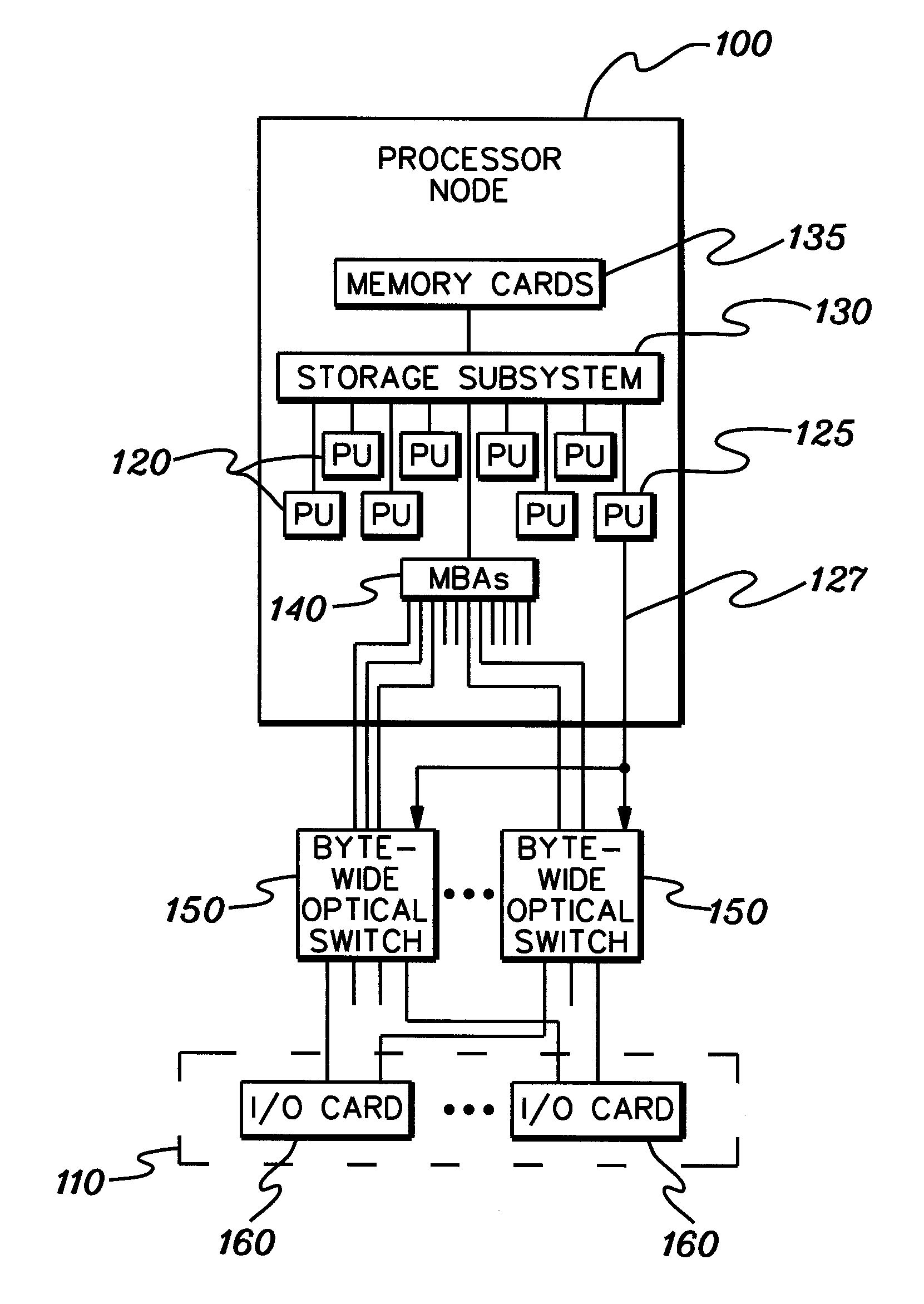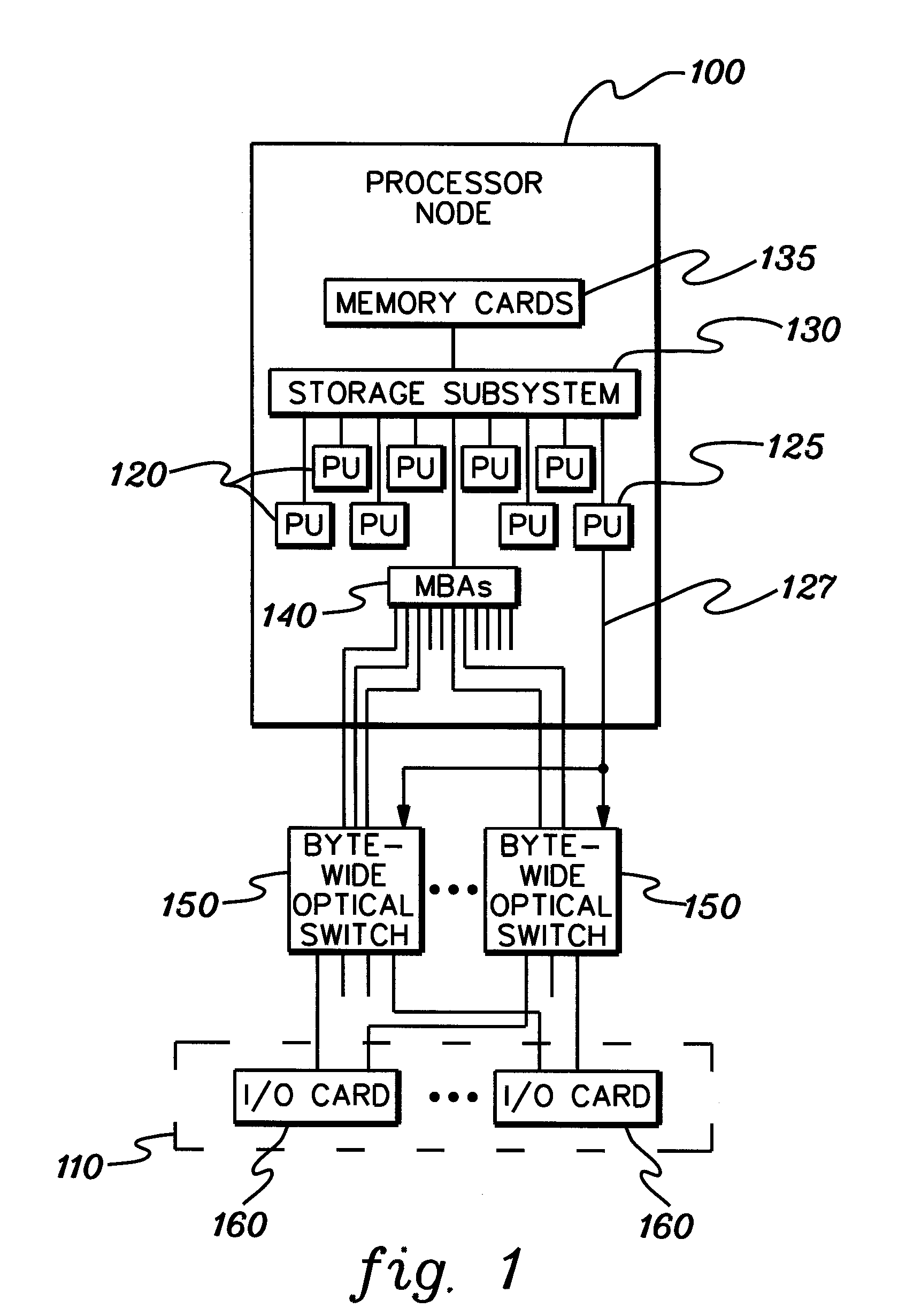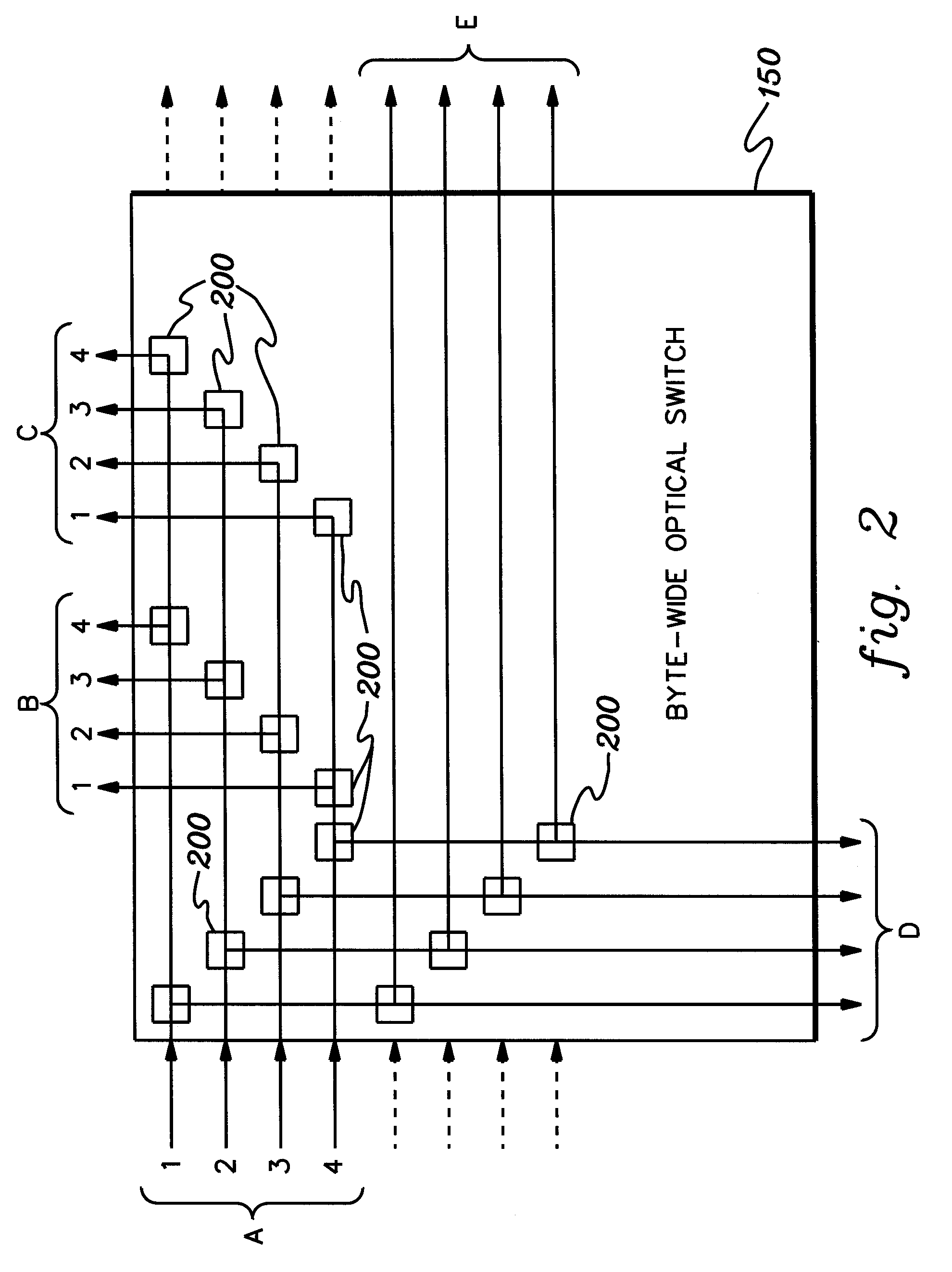Byte-wide optical backplane switching method
a backplane switching and optical backplane technology, applied in the field of optical data transfer, can solve the problems of significant design challenges, difficult to maintain system integrity along the bus, external noise coupled into the interfaces of other components of the system, etc., and achieve the effect of enhancing bandwidth
- Summary
- Abstract
- Description
- Claims
- Application Information
AI Technical Summary
Benefits of technology
Problems solved by technology
Method used
Image
Examples
Embodiment Construction
[0020] In U.S. Pat. Nos. 5,333,225, 5,337,388, 5,396,573, and 5,842,881, each of which is hereby incorporated herein by reference in its entirety, interfacing of optical fiber to various types of multichip module packages and multi-layer printed circuit boards is described. Objects of these patents include addressing packaging and mechanical problems involved in combining optical fiber with conventional chip packaging, and bonding techniques. As the applications for optics in the backplane become more mature, there is identified herein a need for optical backplane switching and routing of backplane interconnects. It is not sufficient to simply provide fiber optic I / O to a chip carrier, rather the optical signals must be switched from one location to another, in a manner that provides low latency, high speed, and low jitter and skew, across multiple bit intervals. To achieve low latency and hence better system performance, it is desirable to eliminate the need for serial-to-parallel ...
PUM
 Login to View More
Login to View More Abstract
Description
Claims
Application Information
 Login to View More
Login to View More - R&D
- Intellectual Property
- Life Sciences
- Materials
- Tech Scout
- Unparalleled Data Quality
- Higher Quality Content
- 60% Fewer Hallucinations
Browse by: Latest US Patents, China's latest patents, Technical Efficacy Thesaurus, Application Domain, Technology Topic, Popular Technical Reports.
© 2025 PatSnap. All rights reserved.Legal|Privacy policy|Modern Slavery Act Transparency Statement|Sitemap|About US| Contact US: help@patsnap.com



